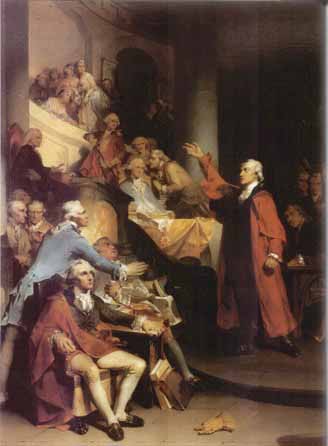The Making of the 50 States: Virginia
Part 2: The Rest of the Story The English government wasn't too happy with the representative nature of the House of Burgesses and revoked the Virginia Company's royal charter in 1624. In its place was a royal colony, one ruled from afar. The colony continued to expand, with the introduction of plantations and a large cattle range. Another Native American attack, in 1644, resulted in nearly 500 deaths. But Virginia soldiered on, determined to make a stand of it in the New World. By this time, of course, other English colonies were thriving on the Eastern Seaboard as well. The Virginia Colony was gripped by a particularly violent series of events in 1676, known as Bacon's Rebellion. A few hundred armed colonists rebelled against the governor, who was himself backed by a few hundred armed English troops. One of the causes of the insurrection was a disagreement over land policies regarding Native Americans. Deaths, of both Englishmen and Native Americans, numbered in the dozens. One of the major settlements, Middle Plantation, became the capital of the colony in 1699, changing its name to Williamsburg in honor of the English king William III. During the next 100 years, colonists alternated between sympathetic and unsympathetic governors. The taxes resulting from the French and Indian War (in which Virginians played a significant role) were none too popular in Virginia, and the colonists took measures to oppose them.
Henry was not the only famous member of the House of Burgesses. Thomas Jefferson, author of the Declaration of Independence, served as a Burgess as well, as did George Washington, leader of the Revolutionary Army. Virginians called a convention in Williamsburg to discuss the struggle for independence. They began meeting on May 6, 1776, two months before the signing of the Declaration of Independence. One thing they decided was that Virginia was to be a commonwealth, a colony independent of Great Britain.
With the experiment of the Articles of Confederation proved a failure, Virginians took the lead in the formation of the Constitution. James
First page > In the Beginning > Page 1, 2 |
|
Social Studies for Kids
copyright 2002–2024
David White



 The most famous of these was the Stamp Act Congress, organized to protest the passage of the famed British tax on paper and other goods. Through the efforts of
The most famous of these was the Stamp Act Congress, organized to protest the passage of the famed British tax on paper and other goods. Through the efforts of  Fighting came to Virginia relatively late in the
Fighting came to Virginia relatively late in the  Madison
Madison One of the main debates was over a
One of the main debates was over a 
